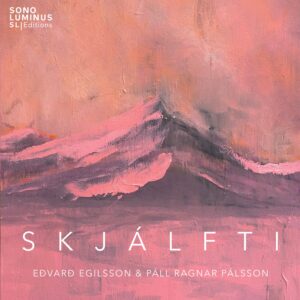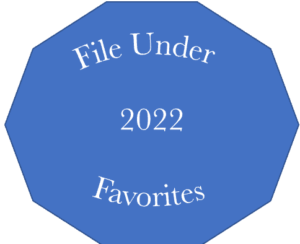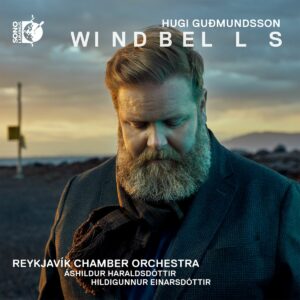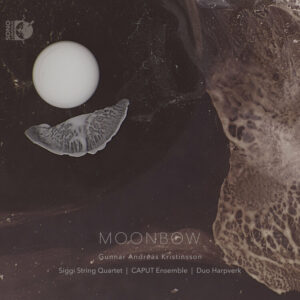Skjálfti
Páll Ragnar Pálsson and Eðvarð Egilsson
Sono Luminus SLE-70031
Today, where the list of practitioners frequently overlap, how does film music translate to concert music adaptation? On the Sono Luminus release Skjálfti (translated: Quake), the Icelandic composers Páll Ragnar Pálsson and Eðvarð Egilsson present a compelling album length suite that is more ambitious than the clip show often heard on soundtrack recordings.
The cello concerto Quake is Pálsson’s best known piece, but Skjálfti doesn’t feature music from it. Instead, it is from Tinna Hrafnsdóttir’s film of the same name, for which Pálsson and Egilsson composed the soundtrack. The album isn’t merely excerpts, but fully developed pieces based on the themes and mood of the film. Electronics, piano, strings, and subtle use of voices populate the music with a hybrid ensemble. It’s not dissimilar from the makeup of totalist ensembles such as Bang on a Can and Icebreaker, but the vibe is far more ambient than the prevailing one for these groups.
“Saga” is one of the best movements of the work. It is like a mini-symphony, developing an ambitious amount of material in three minutes. “Safavél” and “Miklabraut” are other favorites, the former starting with a string and keyboard ostinato until, partway through, a pause, and then guitars and drums join. The accumulation of material and long crescendo is reminiscent of post-rock. Tortoise watch out.
“Gleyma” is listed on the streamers as the hit tune. It begins with mysterious drones and pentatonic shimmering, to which is added an undulating guitar pattern, pattering percussion, and string synth pads. Ostinatos are a time-honored tradition, but they get bogged down in lots of film scores. Pálsson and Egilsson avoid this by creating asymmetric shifts in the texture. Here, a melody and counter melody wend their way around the chord progression in a pleasingly asymmetric fashion.
Skjálfti is an intriguing and enjoyable project: one hopes for further collaborations by the duo, both for film and concert music adaptation.
-Christian Carey






